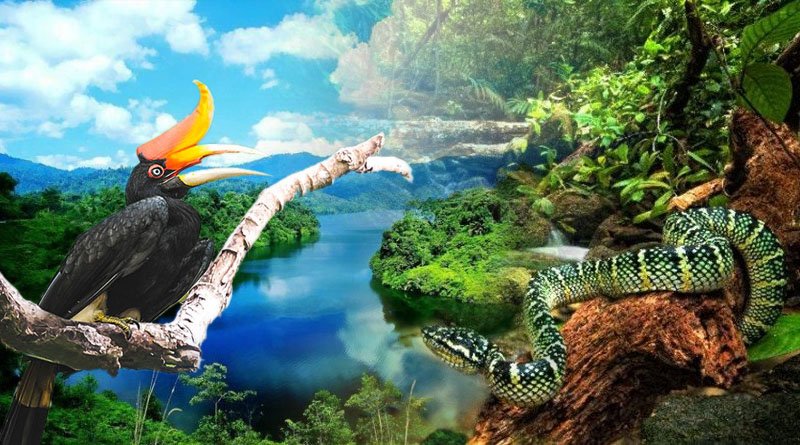The Fourth Industrial Revolution, which is characterised by an unprecedented rise in technological capabilities and the use of robotics is expected to transform many facets of life.
 The use of AI and other cutting-edge technologies to protect biodiversity is highlighted on International Day for Biological Diversity. This includes cutting-edge atlases powered by supercomputers and robotic jellyfish that can remove marine debris from the ocean.
The use of AI and other cutting-edge technologies to protect biodiversity is highlighted on International Day for Biological Diversity. This includes cutting-edge atlases powered by supercomputers and robotic jellyfish that can remove marine debris from the ocean.
Accelerating progress in this area is essential as ecosystem collapse and biodiversity loss are two of the biggest risks in the next ten years.
The collapse of ecosystems will have profound effects on the economy and society. Since nature accounts for more than half of global economic output, the demise of ecosystems will have negative effects on both the economy and society.
The Fourth Industrial Revolution, which is characterised by an unprecedented rise in technological capabilities and the use of robotics, data, and human-machine interactions, is expected to transform many facets of life.
However, this technology has the potential to protect biodiversity. Accelerating progress in this area is essential because the World Economic Forum’s Global Risks Report 2023 lists biodiversity loss and ecosystem collapse as one of the biggest risks the world will face in the next 10 years.
SPARC, or Spatial Planning for Area Conservation in Response to Climate Change, is a high-tech map that uses remote sensing, artificial intelligence, and statistical modelling to determine where 1 million species are and where they might be going.
It was developed by scientists and policy experts from more than 20 organisations and uses supercomputers to run mapping applications based on geographic information systems. This helps to protect the 1 million species in danger of going extinct worldwide.
The Tech4Nature partnership between the International Union for Conservation of Nature and Huawei helps to monitor land and sea for potential threats to biodiversity. In 19 countries, there are 22 solutions in use to manage protected areas and track species. AI and blockchain are used to track global movements of plants, birds, and mammals.
A smart buoy used in the Tech4Nature project has bioacoustic sensors that can pick up dolphin and whale calls. Insights into the behaviour and movements of these animals as well as the effects of noise pollution are provided by the data it receives that is sent via the cloud for AI analysis. T
he Nature Guardian is a tiny solar-powered device with antennas and microphones that can detect sounds over an area of three square kilometres and process everything it learns using AI-powered analytics.
It activates an alarm to notify nearby rangers if it hears the sound of a threat, such as a chainsaw or gunshot. The UN has acknowledged The Nature Guardian for its outstanding contribution to achieving the Sustainable Development Goals.
The motion of swimming jellyfish generates nutrient-trapping underwater currents. The Jellyfish-Bot uses the same idea to assist it in clearing the ocean of trash. Its robotic, electrode-current limbs can gather trash with their movements. It can also pick up large pieces of trash by using its limbs as claws.
The Jellyfish-Bot was developed at the Max Planck Institute for Intelligent Systems, but still needs a wired power supply. Researchers are working to enable wireless communication with the aquatic robot.
The Payments for Environmental Services Program in Costa Rica compensates landowners for the environmental services they provide through sustainable forestry and land management practises.
These services include to protect biodiversity, carbon sequestration, water regulation, and landscape beauty. This has transformed Costa Rica from a nation with one of the highest rates of deforestation in the world into a pioneer in environmentally sustainable development.
For its contribution to the preservation of nature, it has even been recognised as a UN Champion of the Earth. Utilizing specialised technology, it is possible to keep an eye on and assess how funds are allocated and make sure they are given to those who can effectively provide environmental services.